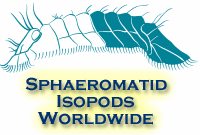


 |
 |
 |
 |
|
Detailed Reference Information |
 |
 |
 |
Detailed information for reference 4298
|
Comment or Correction
|
 |
 |
 |
 |
 |
 |
:: Site design: Kimberly Townsend :: Logos: Michelle Schwengel :: Site infrastructure: Dean Pentcheff :: |
||
|
 This project supported by grant DEB-0129317 from the National Science Foundation |
 |